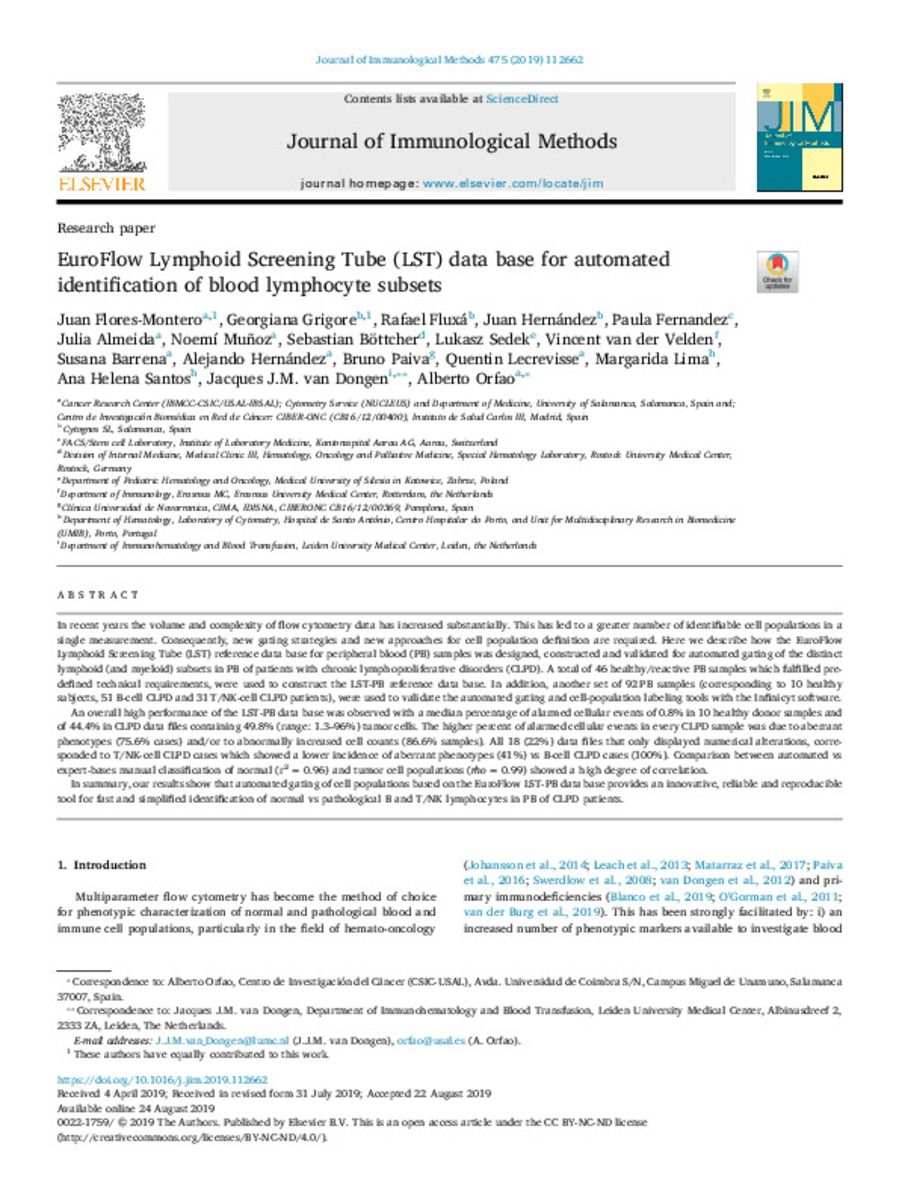EuroFlow Lymphoid Screening Tube (LST) data base for automated identification of blood lymphocyte subsets
Keywords:
Cytometry data
Cell populations
Lymphoid screening tube (LST)
Note:
This is an open access article under the CC BY-NC-ND license
(http://creativecommons.org/licenses/BY-NC-ND/4.0/).
Citation:
Flores-Montero, J. (Juan); Grigore, G. (Georgiana); Fluxá, R. (Rafael); et al. "EuroFlow Lymphoid Screening Tube (LST) data base for automated identification of blood lymphocyte subsets". Journal of Immunological Methods. 475 (2019), 2019, 112662
Statistics and impact
0 citas en

0 citas en

Items in Dadun are protected by copyright, with all rights reserved, unless otherwise indicated.







